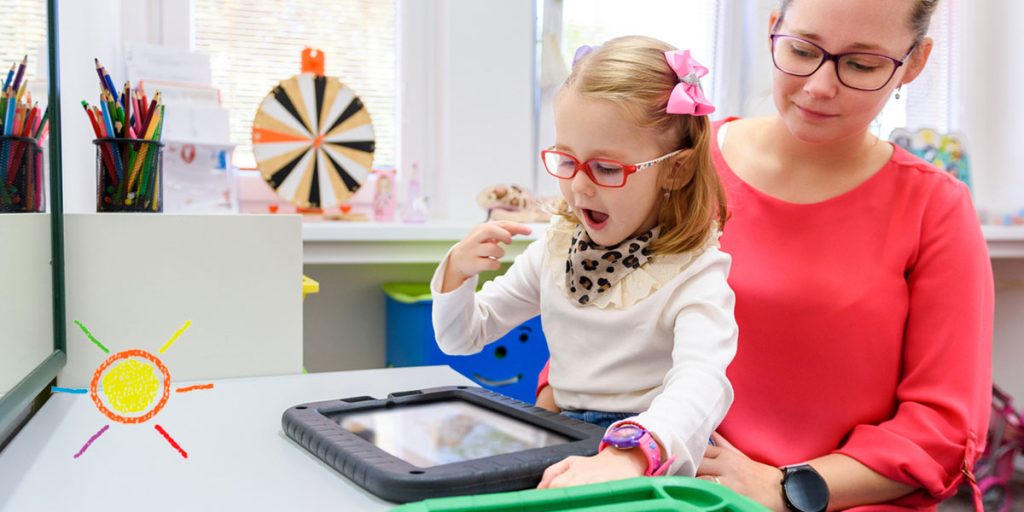Routines help us organize our day and complete all of our essential tasks. Daily routines can be beneficial for children with autism who struggle with transitions and change. It also streamlines responsibilities for parents and caregivers.
Establishing routines at home for children with autism can help reduce stress, teach life skills and encourage family bonding. Use this guide to learn more about what routines are for children with autism and how to build a daily schedule to bring stability and flow to your child’s life.
Why Are Routine and Structure Important for Autism?
Establishing a daily routine may help children with autism have a more predictable structure to orient themselves around, relieving stress associated with the unexpected. Transitions can be difficult for children with autism, especially if they don’t have enough support or aides. Children with autism often miss social cues like packing things up or stopping conversation — some children could also become fixated on a specific task and feel upset if their usual play or routine ends.
How to Create Routines for a Child with Autism
Routines for autism should be structured and organized around the day’s needs and natural order. Start each week by placing a physical version of your child’s daily routine in a spot that’s easily accessible. This will help them establish a predictable rhythm for the week. Giving them as much time as possible to take in the upcoming schedule can help reduce anxiety around the unknown and provides a sense of stability.
To build a routine for a child with autism, you need to incorporate necessary tasks with fun activities to create a balance between finishing tasks and engaging in hobbies. Children with autism often have unique hobbies or interests, and allotting room for these in their schedule gives them recreational time with the things they love.
Use the following steps to build a routine that works for your family and child:
1. Identify Important Tasks
To build the most successful schedule, you need first to outline everything you want your child to get done during the day. This can include chores, homework, eating and anything else important to your family. Once you’ve identified critical tasks, break them into smaller steps. The key to a successful routine is being predictable and specific. Clearly lay out the steps or options for each block to ensure your child understands what’s going on.
For example, getting a child ready for bedtime at 8 p.m. involves more than just going to bed. You might breakdown the pre-bedtime ritual into something like this:
- Put on pajamas
- Brush teeth
- Read one bedtime story
- Turn off the light
If you think too many steps will overwhelm your child, you can also include directions in the schedule next to each task. For example, next to “Get Ready for Bed,” you could write “put on pajamas, brush teeth, wash face,” then have a separate step for reading a bedtime story and turning out the light. Finding the best routine for your child will take some time, so be patient and keep communicating to determine what works best.
2. Create a schedule
Once you’ve laid out all the steps for each day, organize them all into a schedule. Use visual aids and words — you can even have videos or photos of your child performing each task to help guide them. To help with transitions between tasks, use timers. Alarms and timers help guide children through the schedule and give them a noticeable queue to follow.
3. Refer to the Schedule Often
Refer to the schedule often throughout the day to prepare your child for the rest of the day and upcoming activities. Reinforce the plan with descriptive praise like, “Good job cleaning up your crafts on your own.” Reinforcement provides confidence and reassurance to children, making them more sure of themselves and the routine.
4. Be Consistent and Flexible

Consistency is key. Stick to the schedule and try to follow it the same way every day. Remember that it will take time for your child to learn the routine, so don’t give up.
While maintaining the routine is essential, you should allow for some flexibility. Changes in location or routine can upset some children, so prepare them well before any modifications, use positive reinforcement and go slow to make it as easy as possible.
Example of a Daily Schedule for a Child With Autism
Your schedule will be unique to your family and child. Try to organize their day in a way that makes sense with the natural flow of their existing routine. Don’t forget to include blocks for fun activities to give your child time to engage with their interests or explore new ones.
Here’s an example schedule for a child who isn’t in school yet:
7:30 a.m. — Your child wakes up.
8:00 a.m. — Your child brushes their teeth and gets dressed for the day.
9:00 a.m. — Breakfast and clean up. Any leftover time can be used for a short activity like music, reading or conversation.
10:00 a.m. — Free time. Have your child choose an activity from a list of options, like art, reading time, toys or other hobbies.
10:15 a.m. — Have your child pack up their things from free time.
10:45 a.m. — Give your child a short list of healthy snack options to choose from — let them pick their favorite. They can use the leftover time to help clean up the snack, listen to music watch a short video.
11:45 a.m. — Encourage outside play by encouraging your child to choose different outdoor games, toys and activities to build foundational skills.
12:00 p.m. — Create a structured quiet time where your child can watch unwind from play with a relaxing playlist or a short video.
1:00 p.m. — Prepare, eat and clean up lunch together. Give your child two to three lunch options to help them with choice and decision-making.
3:00 p.m. —Nap time! If your child wakes early, they can read or play quiet games.
4:00 p.m. — Encourage more outdoor time.
5:00 p.m. — Allow more time for free play.
5:30 p.m. — Clean up free play activities or encourage your child to help with a small household chore.
6:30 p.m. — Have dinner and clean up.
7:30 p.m. — Watch a movie or show or play a game together for family time.
7:45 p.m. — Help your child get ready for bed.
8:00 p.m. — Read a story before bed.
8:30 p.m. — Your child goes to sleep.
Benefits of a Daily Schedule for Children with Autism
Having a daily schedule to follow adds structure to a child’s day-to-day life and provides them with a constant, comforting routine. Once you establish a routine, your child can begin relying on that order in their life to help them build life skills and maintain their emotional health.
Some benefits of routines include:
- Maintain consistency
- Create a space of comfort and security
- Reduce stress and power struggles
- Improve cooperation
Tips to Successfully Maintain a Routine
To help maintain a daily routine, consistency and practice are essential. Even if the routine is a struggle at first, sticking to it and positively reinforcing each step will help encourage your child to settle into the schedule. Make the schedule feel like it belongs to your child — establish it as a permanent part of their life to help provide structure.
To help your child get used to the schedule and stick to it, use these tips:
- Praise your child for following the routine.
- Provide visual aids like pictures or checking steps off with a marker or sticker to make it less confusing and more rewarding.
- Use timers to help signal transition times.
- Give your child some choices to help them feel in control.
- Be consistent.
Contact MySpot Care for Foundational Skills
Building a schedule for a child with autism can feel like a big task, but help is available. You can get professional assistance and strategies tailored to your child’s unique needs with behavioral analysis. At MySpot Care we use Applied Behavioral Analysis to help address life’s challenges for children with autism. Our expert team will work with you and your child to identify difficulties and build plans to help develop essential life skills and habits.
To learn more about our therapies and how they can help your child with autism, contact us today. We offer in-person, at-home and online services to ensure your child receives the best-specialized care so that they can live their fullest potential.


